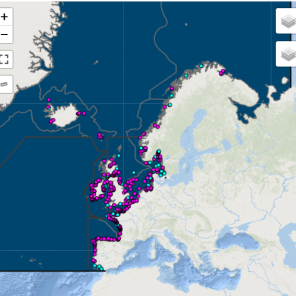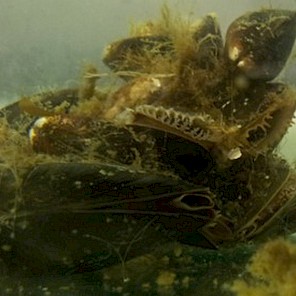| | Artificial and naturally occurring chemicals end up in the North-East Atlantic as a result of land-based and sea-based human activities. Some of these chemicals are hazardous for the marine environment. OSPAR Contracting Parties work to prevent pollution by hazardous substances, by eliminating their emissions, discharges and losses, to achieve levels that do not give rise to adverse effects on human health or the marine environment.
This issue of Friday Ocean Findings focuses on 4 assessments of hazardous substances in the marine environment prepared by our group on Monitoring & on Trends and Effects of Substances in the Marine Environment (MIME).
These assessments, when viewed as part of the QSR 2023, help build a picture of the overall condition of the marine environment of the North-East Atlantic and progress towards achieving our vision of a clean, healthy and biologically diverse North-East Atlantic Ocean, which is productive, used sustainably and resilient to climate change and ocean acidification. The results will also be used by OSPAR Contracting Parties to inform policy decisions.
We hope you enjoy these Indicator Assessments. Please do contact us with any comments at [email protected] #OSPARprotects |  | | Status and Trend for Heavy Metals (Mercury, Cadmium and Lead) in Fish, Shellfish and Sediment | In most areas, concentrations of lead in fish and shellfish are above background levels, and mercury above the environmental threshold. Cadmium was above background levels in northern and eastern areas. Despite bans, concentrations in biota are mostly increasing, particularly in the Greater North Sea (Region II). Concentrations in sediments are often above the environmental thresholds but decreasing in most subregions. |  READ MORE
READ MORE |
| |  | | Status and Trends in the Concentrations of Polycyclic Aromatic Hydrocarbons (PAHs) in Shellfish and Sediment | Although mean concentrations of polycyclic aromatic hydrocarbons (PAHs) in shellfish and sediment, and PAH bile metabolites in fish, in most assessed areas are above background concentrations, they are below levels likely to harm marine species. Concentrations are decreasing or stable in all, but one (Irish and Scottish West Coast sediment) area assessed. Image © Marine Scotland Science |  READ MORE
READ MORE |
|
| |
| | |
|